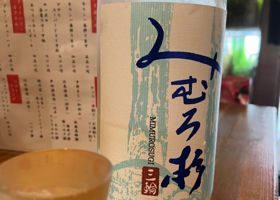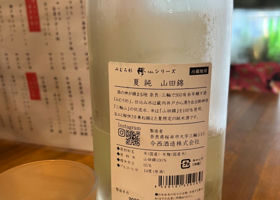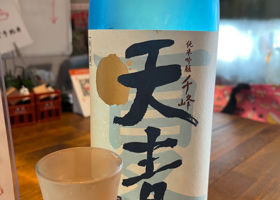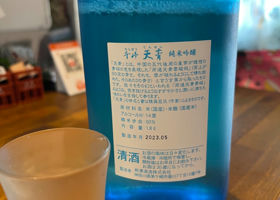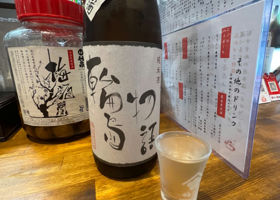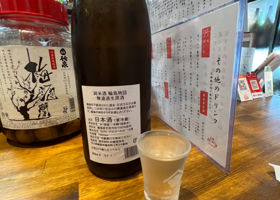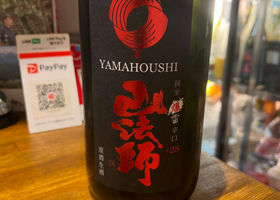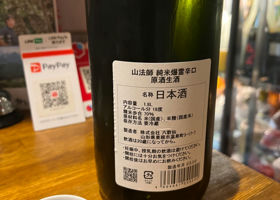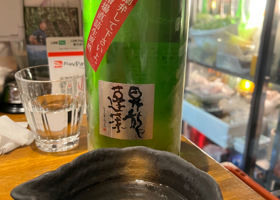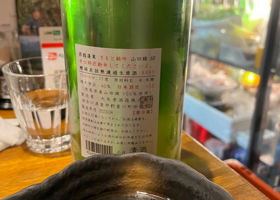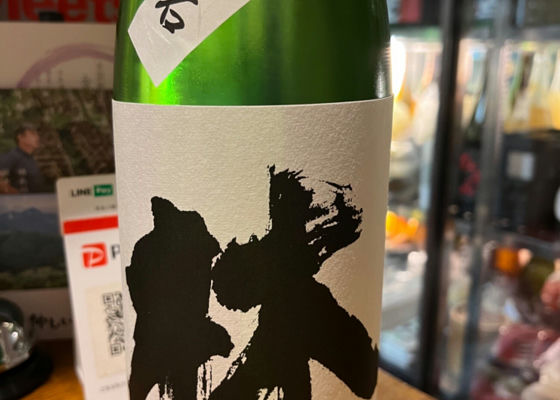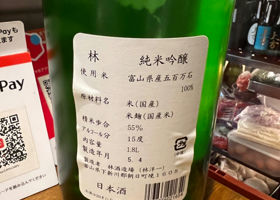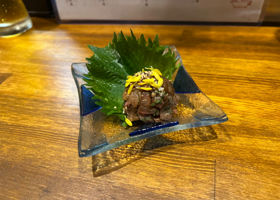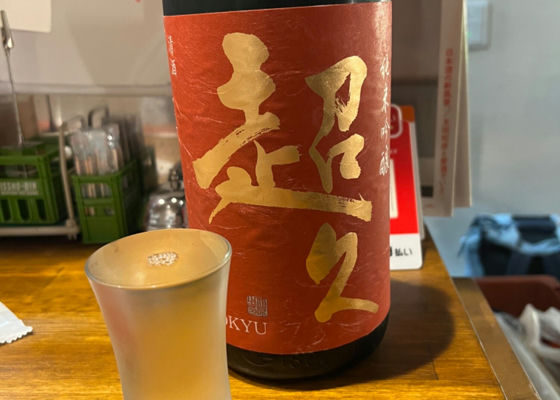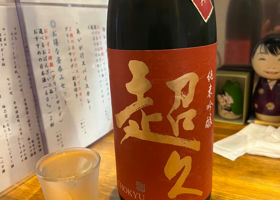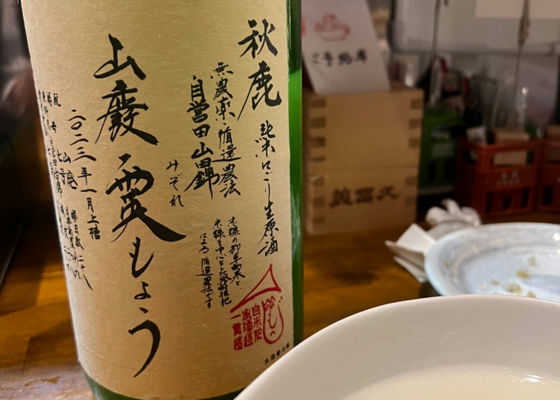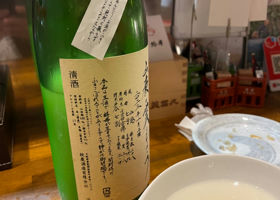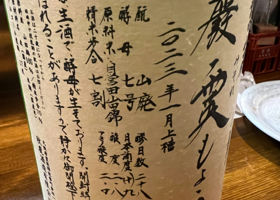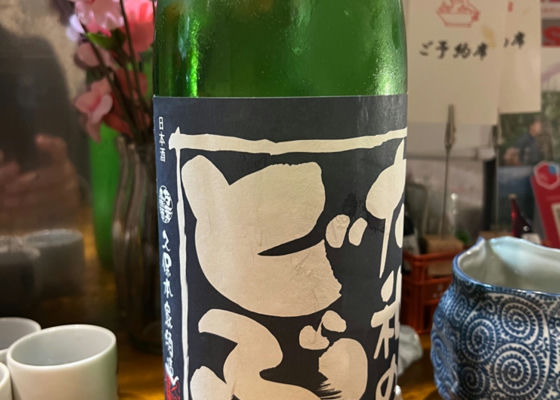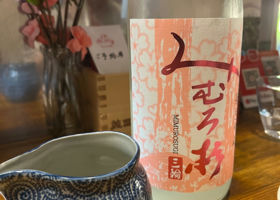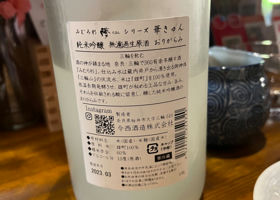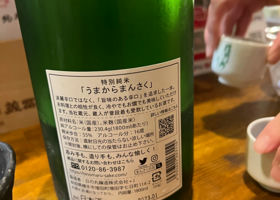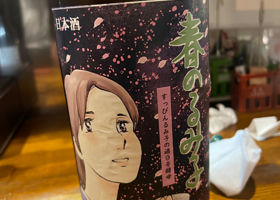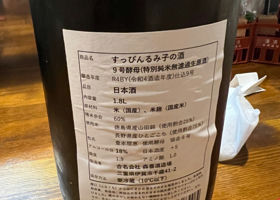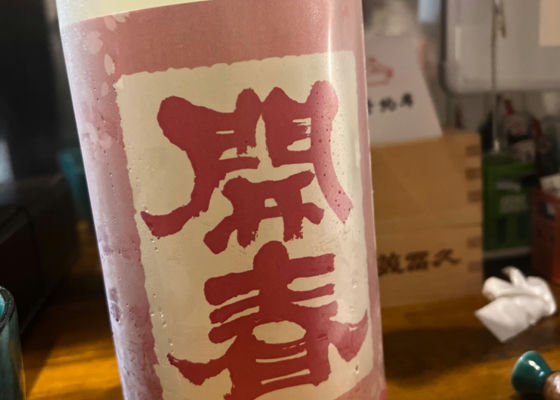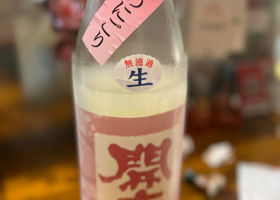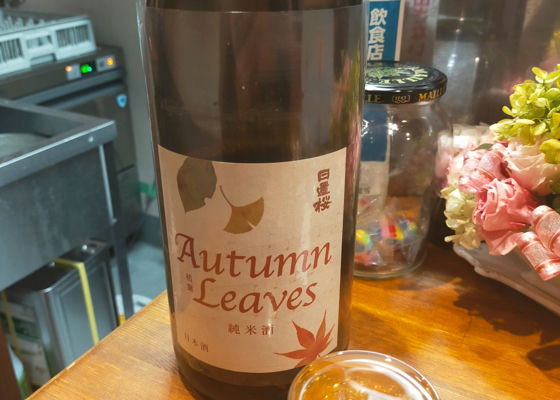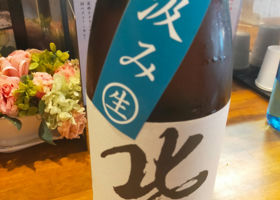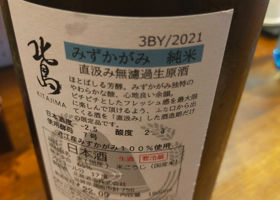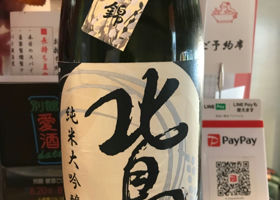Timeline
じゅんさんLast but not least, summer sake, Mimuro cedar.
The aroma is refreshing, ramune-like.
It also has a refreshing taste, and is very easy to drink!
Rice used: Yamadanishiki
Rice polishing ratio 65
Alcohol content 15 じゅんさんI was short on sake, so I asked for something summery, and here it is. So here it is: Senbou Tensei Summer Jungin.
Slightly refreshing! Very refreshing!
Rice used: Yamadanishiki
Polishing ratio 50%.
Pour: 14%. じゅんさんOne of the two drinks in the lunch drinking lunch set.
This is delicious! I couldn't help but say, "I love it! I was surprised and said, "I love this one!
It was empty when I had my first glass, but I want to drink it again.
It has a great balance between the freshness of the unfiltered unpasteurized sake and the umami of the rice! The alcohol content is high, so an empty stomach will make you feel sick!
Alcohol content: 18%.
Rice: Gohyakumangoku produced in Wajima City
Rice polishing ratio: Kake rice 55%, Koji rice 60 じゅんさんOne of the two types of sake that come with Yashima's lunch drinking lunch set. Since it is this time of year, this sake is designed for summer.
The label also has a summer vacation feel to it 🎵.
The dry aftertaste is a good impression.
The aftertaste is clean and refreshing.
Yeast used: K1401
Alcohol level: 16
Sake meter: +8
Rice used: Miyamanishiki
Rice polishing ratio: 55 じゅんさんPlease give me something spicier! I asked for more spiciness! The name is Bakurai Dry +28!
It is said to be the hottest sake in Japan.
I could already taste the umami of rice, but right after that, I couldn't tell if it was sake or not...it was like a sensation that went right through my mouth. Interesting.
Super dry. It's an experience. It might be good as a topic of conversation.
This was my last drink of the day.
Rice: 100% Dewanosato (Yamagata Prefecture)
Polishing ratio: 70%.
Fermentation: Yamagata yeast
Sake meter: +28
Acidity: 1.3
Amino acidity: 1.2
ALC: 18 degrees Shoryuhorai生もと純吟 辛口師匠、勘弁して下さいよ。槽場直詰生原酒 山田錦60 R4BY純米吟醸生酛 じゅんさんFour items that increase the level of spiciness.
Naming: Master Spicy, please give me a break.
As the name suggests, it is dry^ and sharp! Quite a sight to behold! But a good enough sake to go with rice.
It is also a very pleasant experience to drink a local Kanagawa sake in Osaka.
Rice: Yamadanishiki produced in Tokushima Prefecture
Rice polishing ratio: 60
Alcohol content: 17%.
Sake meter: +13.0
Acidity: 2.3 じゅんさんThe third drink, Mansaku no Hana.
Tour rice. Hoshiakari.
There are only two breweries that use Hoshiakari.
Well, I don't remember what it tastes like?
Specified name: Junmai Ichigatsu Hi-ire Genshu (pure rice, once heated)
Koji rice : Hoshiakari produced in Akita
Kake Rice : Hoshiakari produced in Akita
Rice Polishing Ratio: 70
Alcohol Content : 16
Sake Degree: -1.0
Acidity: 1.8
Amino acidity: 0.9
Yeast: Akita NO.12 じゅんさんThis is a limited edition sake from Hayashi Sake Brewery, made from Toyama Prefecture's Gohyakumangoku grape.
We sat at the counter next to Yashima's glass refrigerator, and I was having fun with my companion trying to decide which sake to choose, this, that, or the other, and we chose this sake simply by its naming.
It is a little bit dry, but it has a refreshing and tasty flavor that goes well with today's seafood-centered meal. The horse mackerel was a perfect match!
Rice used : 100% Gohyakumangoku grown in Toyama Prefecture
Ingredients : rice (domestic), rice malt (domestic)
Rice Polishing Ratio : 55
Alcohol content : 16 じゅんさんI brought a new guest for the day, SAKE Yashima in Shin-Osaka.
What kind of sake do you like? The proprietress said.
"Lately, I like a slightly sweet, slightly sparkling one.
What came out was .... The last time I had a cup of Chokyu, which I had praised so highly.
The last drink.
The brewery ships only 180 bottles of this ultra-limited sake.
After a week, there was almost no micro-fuzziness, but it was a very deep junmai ginjo!
Rice variety: 100% Bizen Omachi
Rice polishing ratio: 55
Alcohol content: 16%. じゅんさんI drank it even though it was for lunch.
It was recommended to me at a lunchtime drinking bar, saying, "It was just opened yesterday, but I think it's a little dry and goes well with lunch set menus.
The slightly dry taste is followed by a fruity, fresh, and elegant ginjo aroma that can only be achieved with nama sake. The moderate acidity tightens the aftertaste and gives it a refreshing sharpness.
This is a good sake for lunch!
The brewery shipped only 180 bottles of this super-limited sake. I found out later that it is a very limited sake, with only 180 bottles shipped from the brewery.
Rice variety: 100% Bizen Omachi
Rice polishing ratio: 55
Alcohol content: 16%. じゅんさんThe last and best nigori sake of the day was a local Akizuka from Osaka!
The gasiness when the bottle is first opened and the sizzling nigori when it is poured into a vessel heighten our expectations.
It actually has the delicious flavor of Omachi and is fresh and easy to drink.
The aftertaste is also smooth and free of any cloying taste.
It is like drinking a high quality muddy sake. Highly recommended!
Rice: Omachi
Rice polishing ratio 70%.
Sake degree +10
Acidity 2.2
Alcohol 18-19 degrees Celsius じゅんさんYamato no Dobu, which was drunk in Kyoto in place of the traditional sake yeast yeast yeast yeast yeast yeast yeast yeast yeast.
Also here in Shin-Osaka.
Of course, I had it hot.
I think I drink it regularly.
Ingredients: Gohyakumangoku and Nihombare
Polishing ratio 65
Taste: Good sharpness じゅんさんYour Favorite Mimuro Cedar
In Commentary
The aroma is fresh and invigorating, with a rummy ginjo aroma. Junmai Ginjo Oorigarami is light with a good body, and retains the sweetness and richness unique to Omachi rice as well as the smoothness of the mouthfeel.
I can't write such a beautiful sentence yet, but it hits the mark as it is! Well, it doesn't come off. It is delicious!
Rice used: 100% Omachi
Rice polishing ratio: 60
Alcohol content: 13% (original) じゅんさんSpecial Junmai from Hinomaru Brewery in Mansaku no Hana.
It is dry with a delicious flavor. Quite dry but firm.
It goes well with fried chicken oil. Goes well with meat.
I think it is quite good as a food sake.
Koji rice: Akita sake brewing rice Kake rice: Akita sake brewing rice Polishing ratio: 55% Alcohol level: 16% Sake level: +9 Acidity level: 1.8 Amino acid level: 1.3 Yeast: Association No. 9 じゅんさんRumiko, who has a cartoon touch, is the main attraction.
Rumiko's Sake with Sukippin. Spring version.
Origin of "Suppin": Sake that comes out of the tank mouth is bottled as it was born (without makeup), without filtration, without carbon, without additives, and without water.
I see. I see.
I wonder what it tastes like... Well, fresh?
Ingredients: Rice (domestic), Rice malt (domestic)
Rice used: Yamadanishiki (from Mie Prefecture) 36% / Hachitanishiki (from Hiroshima Prefecture) 64
Rice polishing ratio 60
Alcohol content 18
Sake degree +8
Acidity 1.7
Amino acidity 1.3
Yeast: Association No. 9
Nama-shu/Hi-ire じゅんさんFirst visit to an izakaya in Shin-Osaka, which is usually open for daytime drinking and only opens at night on Thursdays and Fridays.
I asked for a spring-like sake, and this is what came out.
It has just the right amount of sweetness and sharpness.
It is the first nigori (nigori) sake of the spring season.
It is easy to drink.
It is easy to drink, but be careful, as it has a high alcohol content.
It is named "Omachi Yamaguchi" because it is made by Mr. Ryoma Yamaguchi, a toji (master sake brewer).
The name "Yamaguchi" comes from the fact that it is made by Mr. Ryoma Yamaguchi, a toji (master sake brewer).
Ingredients: rice (domestic), rice malt (domestic)
Rice: 100% Bizen Omachi (produced in Okayama Prefecture)
Rice polishing ratio: 65
Alcohol Content: 17
Sake degree: +5
Yeast: Association No. 7
Sake Brewer: Hayasozo
Nigori (unrefined sake)
Brewing year: R4BY
SAKE Yashima のりたまIt has a robust umami of rice, acidity, and a sense of maturity, but it is not cloying, and it is clean and crisp. An interesting sake. のりたまDry with a delicious flavor. It is refreshingly good. Stable taste. のりたまAt Sake Go Around in Osaka.
It is gassy and fresh, delicious with umami and acidity. RecommendedContentsSectionView.title
